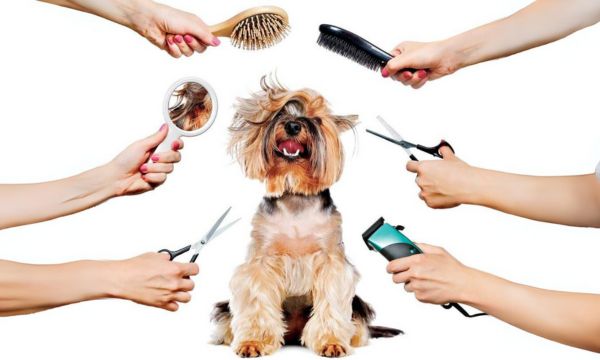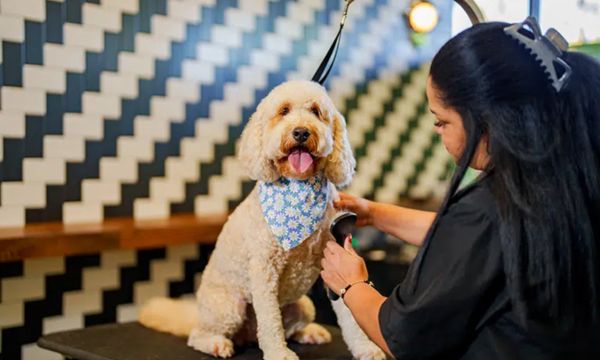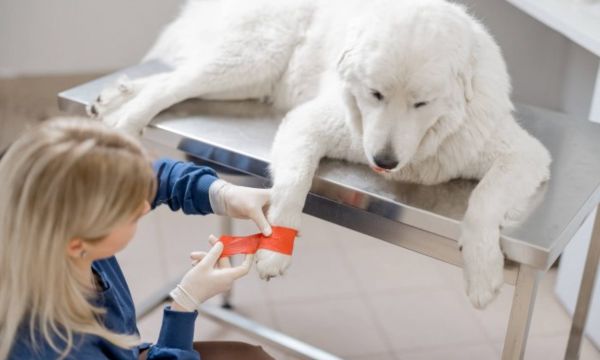Grooming Tips for Senior Dogs
As our furry friends get older, their needs change and require extra care and attention to ensure their health. Grooming is an important aspect of senior dog care. Not only does it keep them looking their best, but it also contributes to their overall health and well-being. In this article, we discuss the importance of grooming for senior dogs and give you valuable tips to make the process smooth and enjoyable for you and your furry companion.
Why Grooming is Important for Senior Dogs
Grooming plays a vital role in maintaining the physical and mental health of senior dogs. Here are some reasons why regular grooming is essential:
- Healthy coat and skin: The skin and coat of older dogs often go through changes, such as dehydration or thinning. Regular care helps distribute natural oils, keeps skin hydrated and prevents knots or tangles.
- Improve blood circulation: Grooming older dogs can stimulate blood flow to the skin, improve blood circulation and contribute to skin and coat health.
- Detecting problems early: Grooming sessions provide an opportunity to examine the dog’s body for lumps, lumps or any abnormalities. Early detection allows timely veterinary intervention when needed.
- Bonding time: Grooming provides one-on-one quality for you and your older dog. This can help strengthen your bond and provide comfort to your partner.
Grooming Tips for Older Dogs
Here are some grooming tips to keep your senior dog looking her best:
- Brush teeth regularly: Depending on the breed, older dogs may need brushing less often than younger dogs. However, regular brushing is still critical to prevent tangles, remove loose hair and promote a healthy coat.
- Trim nails carefully: As your dog becomes less active, his nails may not wear down naturally. Trim your nails regularly to prevent overgrowth, which can cause discomfort and reduced mobility.
- Dental Care: Dental health is vital to overall health. Brush your dog’s teeth regularly and provide dental treats or toys to promote oral hygiene.
- Bath time: Older dogs may not need frequent baths unless they are particularly dirty. Use a mild dog-friendly shampoo and make sure the water is warm, not hot, to keep your furry friend comfortable.
- Ear and eye care: Check your dog’s ears for signs of infection and gently clean them if necessary. Watch for discharge or redness in the eyes, which may require veterinary attention.
- Adjust as needed: Older dogs may have arthritis or joint problems. Provide a soft surface for them to stand on during training and move gently so they feel comfortable.
Special Considerations for Senior Dogs
When caring for senior dogs, it’s important to understand their specific needs and potential challenges. Here are some additional considerations to keep in mind:
- Frequency: While regular grooming is important, excessive grooming can strip senior dogs of their natural oils from their skin. Consult your veterinarian to determine the appropriate grooming frequency based on your dog’s breed, coat type and overall health.
- Sensitive areas: Older dogs may have sensitive areas on their bodies. Be careful and careful when cleaning joints, bone areas and possible painful areas.
- Heat: Older dogs are more sensitive to temperature fluctuations. Make sure the grooming environment is warm and comfortable to prevent them from getting cold during or after the grooming session.
- Professional Grooming: If you’re unsure about grooming your older dog, consider enlisting the help of a professional groomer experienced in working with older dogs. They can provide professional care and attention to your dog’s unique needs.
- Positive Reinforcement: Make grooming a positive experience for your senior dog through treats, praise, and patience. This can help reduce the anxiety and stress associated with grooming.
- Keep an eye on weight: Obesity can exacerbate joint problems in older dogs. Regular grooming sessions give you the opportunity to monitor your dog’s weight and body condition.
Premium Dog Grooming Tools
Having the right grooming tools can make the whole process smoother and more effective. Here are some must-have tools you should have on hand:
- Soft brush: Choose a brush that is gentle on your older dog’s skin and coat. Soft-bristled brushes are ideal for removing loose hair without causing discomfort.
- Grooming Wipes: These wipes can be used to clean your dog’s paws, face, and other areas between baths.
- Nail clippers: Choose a nail clipper designed for dogs. Be sure to trim your nails carefully to avoid cutting them.
- Toothbrush and toothpaste: Use a toothbrush and toothpaste formulated specifically for dogs to help keep their teeth healthy.
- Ear Cleaning Solution: Use a mild ear cleaning solution to keep your dog’s ears clean and free of debris.
- Treats and Rewards: Have treats on hand to reward your older dog for good behavior during grooming.
Conclusion
Grooming is an important aspect of senior dog care that goes beyond just looks. This is to maintain your furry friend’s happiness, comfort and health. By tailoring your grooming routine to your senior dog’s needs, you can ensure he ages beautifully and makes the most of his senior years. Whether it’s a soft brush, a soothing bath or a careful manicure, every grooming is an opportunity to show love and devotion to your dear partner. Remember that a little extra care and attention can keep your older dog happy and healthy for years to come.
Frequently Asked Questions
1. How often should I groom my older dog?
The frequency of grooming depends on factors such as your dog’s breed, coat type and overall health. In general, older dogs can be groomed less often to prevent excessive stress on their skin and coat. Consult your veterinarian to determine a grooming schedule that fits your dog’s specific needs.
2. My older dog does not like grooming. what can I do?
It is not uncommon for older dogs to have a reduced tolerance for grooming as they age. Make grooming a positive experience by associating it with treats, compliments and a calm environment. Keep grooming sessions short and gradually increase their duration.
3. Can I bathe my older dog, even if it has limited mobility?
Absolute. Bathing is an important part of caring for older dogs. To make it easier for dogs with limited mobility, use non-slip mats in the bathing area and make sure the water is a comfortable temperature. You may also consider a handheld shower head for better control.
4. Is there a special shampoo for older dogs?
Yes, there are shampoos specially formulated for older dogs. These shampoos are generally gentler on the skin and coat, taking into account the changes that occur with age. Look for shampoos with moisturizing ingredients to prevent dryness.
5. My old dog’s nails are very long. How can I trim them safely?
Long nails can be uncomfortable and even cause mobility problems. If you’re not comfortable trimming your dog’s nails yourself, seek help from a professional groomer or veterinarian. They can demonstrate proper technique and make sure nails are trimmed safely.
Be sure to check out our article: Welcome to the Dog Spa and Wellness Center. You’ll be surprised at how it will help you clarify doubts on the subject.
 Dog Grooming Tools and Equipment
Dog Grooming Tools and Equipment
Grooming is an important part of being a responsible pet owner, and it’s no different when it comes to our furry friends, dogs. Regular grooming not […]
Keep reading Welcome to the Dog Spa and Wellness Center
Welcome to the Dog Spa and Wellness Center
Treat your furry friend to the ultimate relaxing and rejuvenating experience at our state-of-the-art spa and wellness center for dogs. Our team of professional, board-certified pet […]
Keep reading Dog Grooming Safety and First Aid
Dog Grooming Safety and First Aid
As a dedicated dog owner, you understand the importance of making sure your dog not only looks his best, but feels his best. Regular grooming is […]
Keep reading